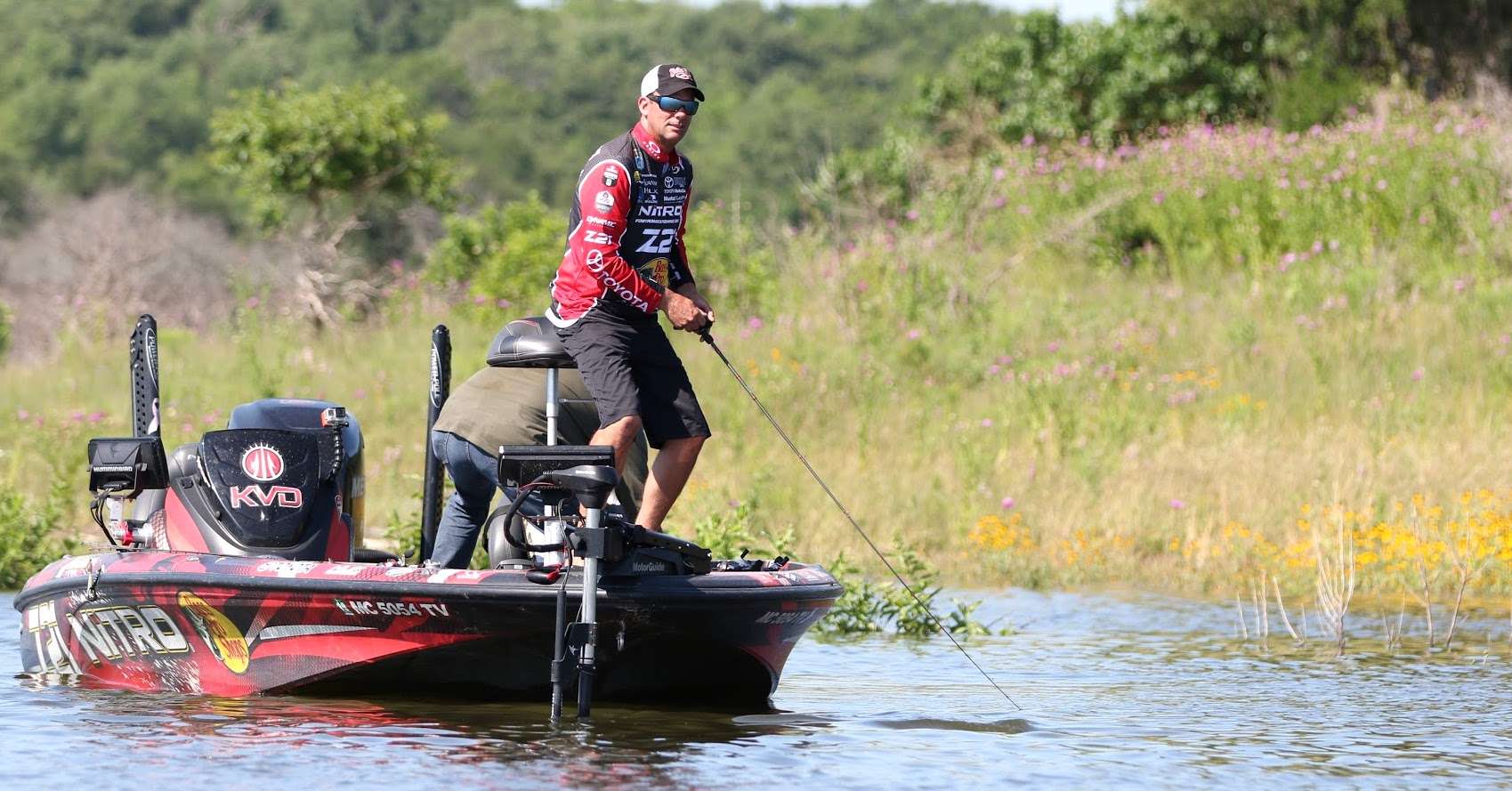
When fishing shallow cover, most anglers think of swim jigs, swim baits, frogs or topwaters.
But what about swimming worms? Now, there’s a tactic that has been used since the day plastic worms were created but in this era of trendy baits and techniques, it’s been forgotten.
Not for me. I love swimming a worm over shallow grass, especially in places where you can’t fish a buzzbait, spinnerbait or other types of lures that might hang up.
You can use a standard plastic worm, but some manufacturers offer a more specialized swimming worm that works more efficiently.
Years ago, I used a Producto Paddle Tail worm for this technique. It was the original “swimming worm.”
More recently, I helped Strike King create the Rage Cutter Worm that has a bulky body similar to a stick worm and a subtle Rage “cut” tail. That tail produces a subtle vibration and disturbance when pulled through the water.
I’ve found that more action isn’t always better. If you want to move a lot of water or create more vibration, use a bladed jig or spinnerbait.
But there are times when a subtler action is more appealing to bass, especially around shallow grass or vegetation, and these modern day swimming worms offer that.
The Cutter Worm can be fished weightless over super shallow grass. Because it has a lot of salt it is heavier, so you can cast it well with a baitcaster and still fish it over the top or just beneath the surface.
That’s a technique I’ve done well with on the St. John’s River where there is a lot of eel grass. When the tide is out, I will swim the Cutter Worm through grass in less than a foot of water and generate the kind of action it takes to get those fish to bite.
A lot of Florida lakes that have hydrilla and other shallow vegetation are perfect for that technique. In fact, at Okeechobee this year I caught several bass by fishing a Texas-rigged Cutter Worm in June bug color. That tail displaces enough water that you can even fish it in stained water on lakes like Toho or Kissimmee.
I’ve also used it for skipping under docks on our northern natural lakes and even fished it on deeper grass with a little more weight. It slides well through grass too thick for some other soft plastic baits.
I Texas rig it with a Mustad Grip Pin Hook and often use small diameter braid when swimming over thick grass to make it easier for hooking bass and getting them out.
I also like to let it fall into holes of deeper grass. When you kill it, the bait will emit a slow wag to the tail.
If you fish it with a sinker, think about what you want the bait to do before choosing your weight. If I want it slower, I use a 1/8 ounce, but most of the time will use a ¼-ounce tungsten weight fish a little faster.
You don’t have to peg the weight when swimming it, but I often do because I like to kill the bait and let it slink into holes of the grass. The pegged sinker helps pull the bait into the holes.
As you can see, swimming worms give you another option for fishing shallow cover. On pressured lakes, that option likely is one that the bass haven’t seen and could produce a few more bite.
Remember, it’s all about the attitude!
Kevin VanDam’s column appears weekly on Bassmaster.com. You can also find him on Facebook, Twitter and Instagram.

